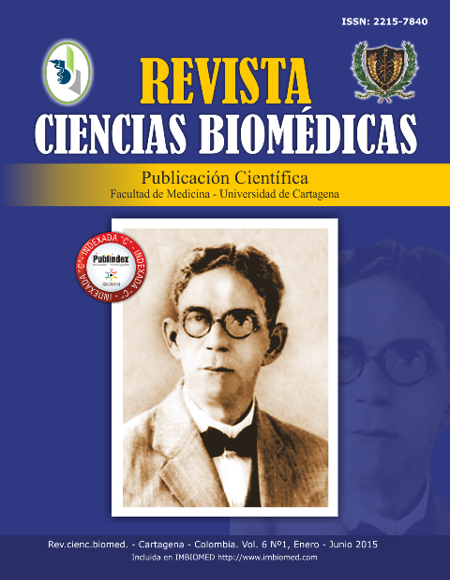Tumor glioneuronal papilar en fosa posterior
Tumor glioneuronal papilar en fosa posterior
Contenido principal del artículo
Resumen
Introducción: el tumor glioneuronal papilar (TGNP) es una entidad rara y de reciente tipificación. De probable origen en las células pluripotenciales de la placa subependimaria, que está ubicada principalmente alrededor de las astas temporales de los ventrículos laterales. En dichos sitios típicamente se presentan estas neoplasias.
Caso clínico: se presenta un caso atípico de TGNP en una paciente de 48 años de edad, con tumor que comprometía el vermis inferior y ambos hemisferios cerebelosos.
Conclusión: el TGNP se ubica generalmente en el espacio supratentorial. No obstante, se ha señalado la existencia de células pluripotenciales en la placa subependimaria, alrededor del área postrema, en la eminencia media del piso del cuarto ventrículo y en el plexo coroideo, ello pudiese explicar la exótica ocurrencia de TGNP en la fosa posterior. Rev.cienc.biomed. 2015;6(1):150-154
Palabras clave:
Descargas
Detalles del artículo
Referencias (VER)
Louis DN, Ohgaki H, Wiestler OD, Cavenee WK, Burger PC, Jouvet A, et al. The 2007 WHO classification of tumours of the central nervous system. Acta Neuropathol. 2007;114:97-109.
Allende DS, Prayson RA. The expanding family of glioneuronal tumors. Adv Anat Pathol. 2009;16:33-9.
Ulivieri S, Oliveri G, Cerase A, Miracco C. Papillary glioneuronal tumor of the fourth ventricle: case report and review of the literature. G Chir. 2010;31:368-70.
Govindan A, Mahadevan A, Bhat DI, Arivazhagan A, Chakraborti S, Suja MS, et al. Papillary glioneuronal tumor-evidence of stem cell origin with biphenotypic differentiation. J Neurooncol. 2009;95:71-80.
Xiao H, Ma L, Lou X, Gui Q. Papillary glioneuronal tumor: radiological evidence of a newly established tumor entity. J Neuroimaging. 2011;21:297-302.
Myung JK, Byeon S, Kim B, Suh J, Kim SK, Park CK, et al. Papillary glioneuronal tumors: A review of clinicopathologic and molecular genetic studies. Am J Surg Pathol. 2011;35:1794-805.
Amemiya S, Shibahara J, Aoki S, Takao H, Ohtomo K. Recently established entities of central nervous system tumors: review of radiological findings. J Comput Assist Tomogr. 2008;32:279-85.
Bennett L, Yang M, Enikolopov G, Iacovitti L. Circumventricular organs: A novel site of neural stem cells in the adult brain. Mol Cell Neurosci. 2009;41:337-47.
Mignone JL, Kukekov V, Chiang AS, Steindler D, Enikolopov G. Neural stem and progenitor cells in nestin-GFP transgenic mice. J Comp Neurol. 2004;469:311-24.
Komori T, Scheithauer BW, Anthony DC, Rosenblum MK, McLendon RE, Scott RM, et al. Papillary glioneuronal
tumor: a new variant of mixed neuronal-glial neoplasm. Am J Surg Pathol. 1998;22:1171-83.
Prayson RA. Papillary glioneuronal tumor. Arch Pathol Lab Med. 2000;124:1820-3.
Radotra BD, Kumar Y, Bhatia A, Mohindra S. Papillary glioneuronal tumor: a new entity awaiting inclusion in WHO classification. Diagn Pathol. 2007;2:6.
Guo SP, Zhang F, Li QL, Li Q, Wang WL, Li FF. Papillary glioneuronal tumor-contribution to a new tumor entity and literature review. Clin Neuropathol. 2008;27:72-7.
Ishizawa T, Komori T, Shibahara J, Ishizawa K, Adachi J, Nishikawa R, et al. Papillary glioneuronal tumor with minigemistocytic components and increased proliferative activity. Hum Pathol. 2006;37:627-30.
Tsukayama C, Arakawa Y. A papillary glioneuronal tumor arising in an elderly woman: A case report. Brain Tumor Pathol. 2002;19:35-9.



 PDF
PDF
 FLIP
FLIP




